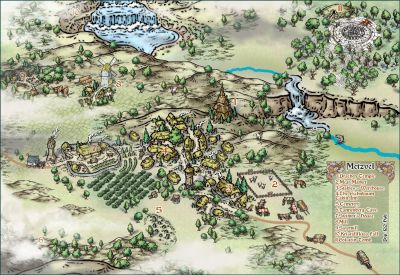
Monsen
Monsen
About
- Username
- Monsen
- Joined
- Visits
- 694
- Last Active
- Roles
- Administrator
- Points
- 8,958
- Birthday
- May 14, 1976
- Location
- Bergen, Norway
- Website
- https://atlas.monsen.cc
- Real Name
- Remy Monsen
- Rank
- Cartographer
- Badges
- 27
-
the BOX command isn't giving me a filled in box
-
Live Mapping: The Drawing Tools
Easy enough. Started with a clipart png of a cat, used TRACED to convert it into a polygon, then used list on it and extracted the coordinates. Some simple excel magic to convert them into relative coordinates so I could place it where I wanted, and then just created a macro with the SPOLY command that reads the coordinates.
-
Isometric and Top Down View for Small Cottage
Both of those should be easy enough to do, depending on what products you have.
For the cottage, any dungeon style should do, but Symbol Set 4 do come with Schely's forlorn cottage set, so if you have SS4, that's probably a good option. If not DD3 also works fine. But even without any additional add-ons, you have access to several dungeon styles, such as the Jon Roberts dungeon, or the more limited CC3 dungeon.
The isometric view do require Perspectives 3 to pull of properly. Check the essentials guide to get started, or if you also have the Tome, you can check out the first Perspectives tutorial there.
-
Community Atlas - Stromphe City - The Islands district
You should work a bit with that sea background. It looks bad because of the amount of repetition. Unfortunately, it isn't as easy to cover up as land, but you should at least be able to increase the scaling a fair bit to at least lessen the effect.
Since this is a close-up map, I would also have looked into adding more depth contours. A detail map of a region will usually have smaller interval between contours than the main map, thereby exposing additional contours that's not visible on the main map. The smaller scale also makes it reasonable to add areas that was too small to include in the overview map. I think I might actually see some indication around the Islands when I look close, but it is a bit too small and subtle.
-
Inkscape to CC3+, .DXF files not working...
I have to agree with Sue, making them inside CC3+ gives the best results.
The important thing to keep in mind when you try to use intermediate formats like .dxf/.dwg is that dxf/.dwg may not support all the features from Inkscape, and CC3+ may not support all the features from that dxf file again, resulting in a file that will probably be severely lacking compared to the original in Inkscape. Working with vectors isn't like working with images, where it will look identical whether you save it in .bmp, .jpg, .png or .gif, on the contrary, it's probably going to look quite different. Basic shape will be usually preserved, but all the more fancy stuff are likely to not survive the conversion. (Think of it as saving a fancy word document to plain text. Word supports it, but it looses all formatting like fonts, colors and lots more.)






